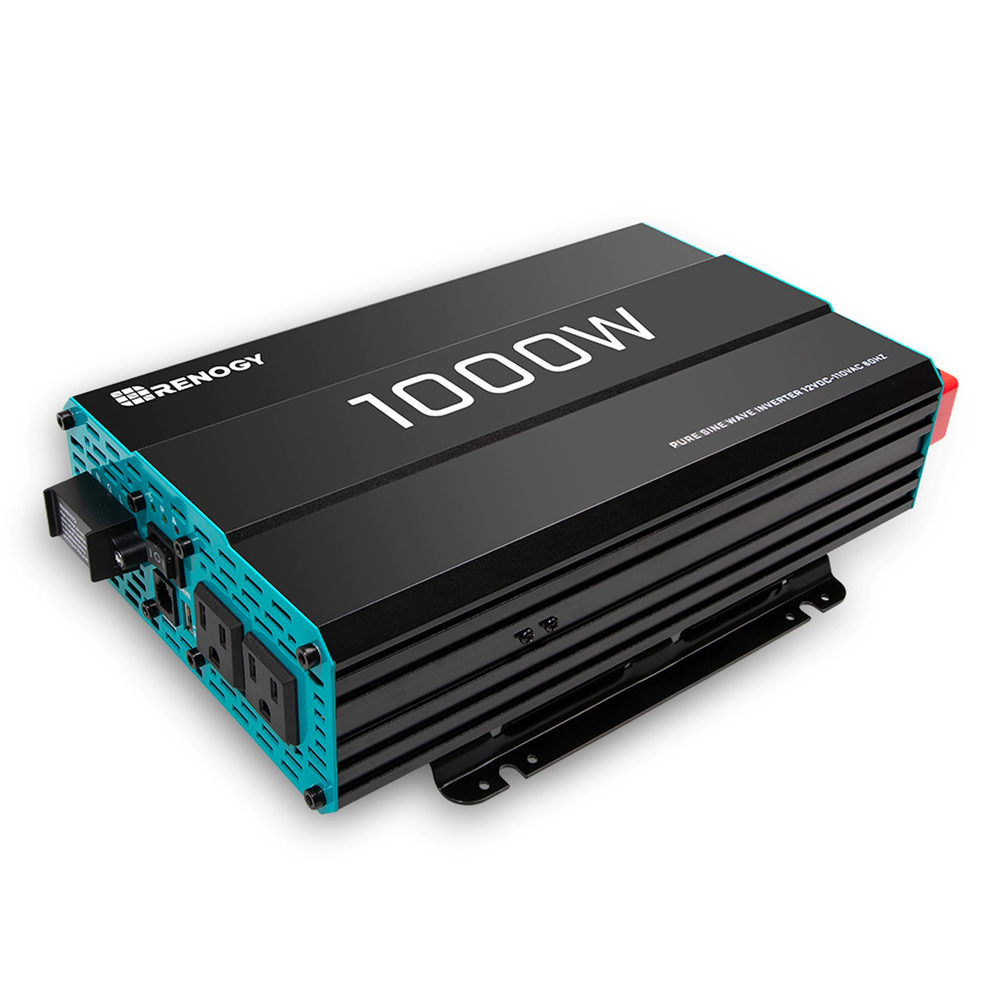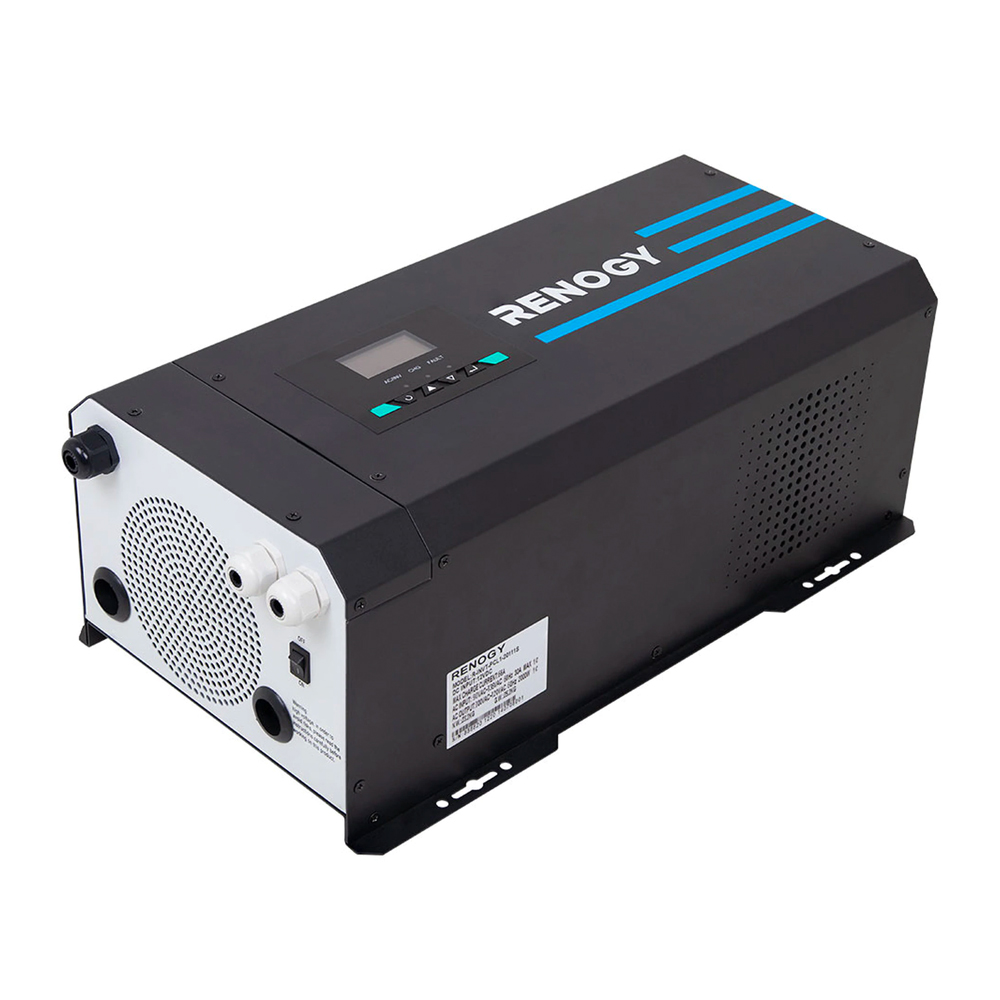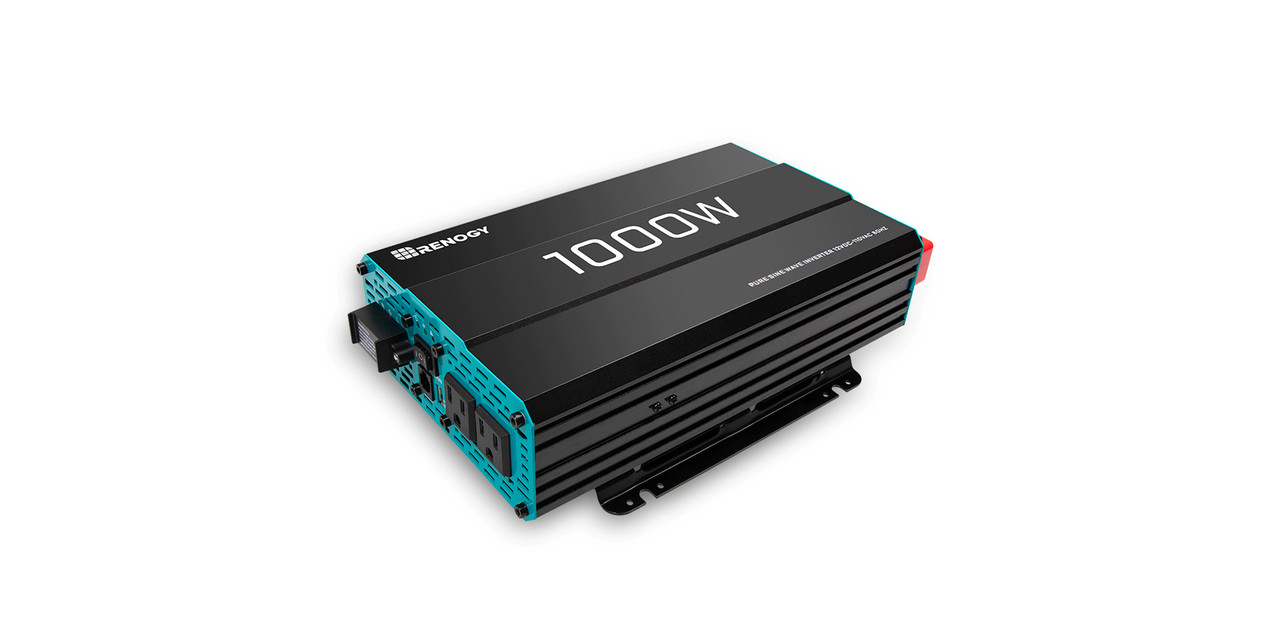Benefits of Pure Sine Wave vs. Modified Sine Wave Inverters
Which is better: modified sine wave vs pure sine wave inverter?
Solar inverters are a crucial component of every solar installation. Inverters turn the power produced from your solar panels and stored in your battery from DC to AC power. An inverter is necessary to power the common appliances found in your home, cabin, or RV, from laptops to microwaves. When shopping for inverters, you’ll quickly find there are two main types: modified sine wave inverters and pure sine wave inverters. Let’s break down the differences between those inverters, what they can power, and what may be the best inverter for you to use in your installation.
What is a solar inverter?
Inverters serve as the gateway between the photovoltaic system and the devices drawing energy from your system. They turn the direct current (DC) output from your solar panels into alternating current (AC), which is the standard used by all commercial appliances.

Why do I need an inverter for my solar installation?
Solar inverters are an essential component of your solar installation. Most appliances in your home use AC energy, so the energy produced for your panels (DC) needs to be converted. Inverters convert DC to AC. They also change the voltage. After your solar panels collect sunlight and turn it into energy, that gets sent through the charge controllers and inverters. Inverters convert that power to AC energy. At that point, you’ll be able to plug in your appliances and start using that energy. Renogy battery inverters also provide overload protection for both DC input and AC output to prevent any damage to the components and the unit.
What is a pure sine wave inverter?
Pure sine wave inverters output voltage in the form of sine waves. Utilities also provide sine wave output. Because of this, pure sine wave inverters are always needed if you’re going to be tied to the grid. Typically, you’ll need pure sine wave inverters for sensitive equipment, newer TV’s, CFL light bulbs, and appliances with AC motors (microwaves and refrigerators).
Pure sine wave inverters are capable of producing cleaner, smoother, quieter, and more reliable electricity to operate appliances and electronics without interference. Renogy sells a range of pure sine wave inverters of varying capacities to fit your solar installation and your energy needs.
What is a modified sine wave inverter?
What is modified sine wave inverter? In pure sine wave inverters, the AC power produced by the inverter very closely matches an actual sine wave. In modified sine wave inverters, the polarity abruptly switches from positive to negative. When looking at the wave, it has a stair-step, square pattern, where the polarity is flipped back and forth. That choppy wave can negatively affect more delicate, sensitive equipment. If you have medical equipment you need to power, such as a CPAP machine, you won’t be able to use a modified sine wave inverter. Additionally, in many cases, you’ll hear a hum with devices attached to a modified sine wave inverter.If you have to compare pure sine wave and square wave(sine wave vs square wave), the simple answer is that pure sine wave are better than square wave in terms of safety, work efficiency, and compatibility.
What can I run with a modified sine wave inverter?
Modified sine wave inverters can be used in simple systems without sensitive electronics. If there isn’t an AC motor and isn’t a delicate piece of medical equipment, you may be fine. Old tube tvs, water pumps, and phone chargers usually operate ok with a modified sine wave inverter.
Appliances like refrigerators, microwaves, and compressors that use AC motors won’t run as efficiently on a modified sine wave inverter. Some fluorescent lights will also not operate quite as bright, and some may buzz or make humming noises.
What do I need a pure sine wave power inverter to run?
- Appliances with AC motors: Microwaves and refrigerators
- Medical equipment, such as CPAP machines with humidifiers
- Sensitive electronics
- Laser printers
- Newer TV’s
- Appliances with electronic timers or digital clocks
Your laptop may be ok with a modified sine wave inverter, although some claim that not using a pure sine wave power inverter will shorten the lifespan of your laptop’s battery.
What are pros and cons of using a modified sine wave inverter?
Pros:
Less Money upfront: The main benefit of using a modified sine wave inverter is that it is less money upfront. Modified sine wave inverters typically cost between $50 and $600. Pure sine wave inverters cost between $150 and $900.
Cons:
Lower efficiency: Motors, such as those in refrigerators, pumps, and fans will use more power from the inverter due to a lower efficiency. Most motors will use about 20% more power. This is because the motors will run hotter, which also means it will make them not last as long.
Will not work with many appliances: As mentioned above, modified sine wave inverters do not work well with appliances that have an AC motor, medical equipment, and other sensitive electronics. When used with lightbulbs, they may not glow as bright and may produce a hum. Laptops may also see a shortened lifespan when used with modified sine wave inverters.
What size inverter do I need (sine wave vs square wave)?
Solar inverters come in a range of sizes. Inverters are rated in watts, just like solar panels. Because your solar inverter converts DC electricity coming from the panels, your solar inverter needs to have the capacity to handle all the power your solar array produces.
As a general rule of thumb, the size of your inverter should be similar to the DC rating of your solar panel system. So if you are installing a 3000 watt system, you should purchase an inverter of around 3000 W. To size your system, we recommend using the Renogy Solar Power Calculator.
Renogy has pure sine wave inverters ranging in size from 700 to 3000 watts. Inverter chargers are also a great option for those living off-grid who may also connect to shore power occasionally and want to charge a battery bank. In addition to converting DC to AC, the Renogy 2000W Pure Sine Wave Inverter Charger can charge and maintain a battery bank when connected to shore power.

Can I use modified sine wave inverter with off-grid system? Grid tie system?
Can I use a modified sine wave inverter with an off grid solar system? You’ll need a pure sine wave power inverter if you’ll be connected to the grid. This is because utilities provide energy in the form of pure sine waves. If you’re staying off-grid however, you can definitely use a modified sine wave inverter to power your simple appliances.
What’s the verdict? What should I purchase?
Pure sine wave inverters used to be a fancier, spendier option for many consumers, but as the cost of pure sine wave inverters continues to drop, pure sine wave inverters are becoming more affordable. Modified sine wave inverters are still a viable option if you have limited, simple appliances to power and aren’t as concerned with efficiency. However, if you want the peace of mind of knowing your appliances and devices will run safely and at the highest efficiency, we recommend purchasing a pure sine wave inverter.
Check our other related articles to learn more solar knowledge:
Solar Panels 101: A Beginner's Guide
Do solar panels increase home value








